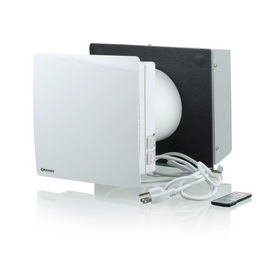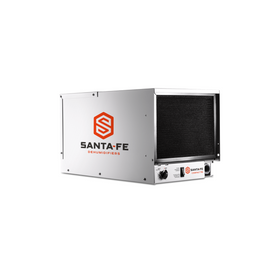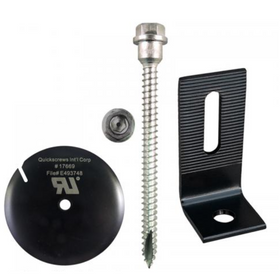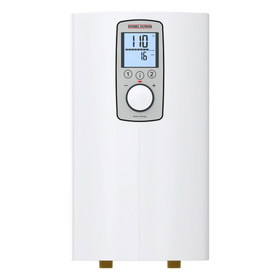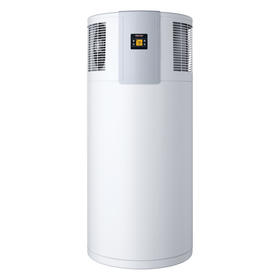
How to Clean Your Dryer Vents
Last Updated: Apr 13, 2025How often do you clean your clothes dryer? Many people don’t realize it, but cleaning out your dryer vent each and every time you dry a load is one of the most important things you can do to protect your home.
The U.S. Fire Administration (USFA) reports that 2,900 fires are caused each year with their origins sourced at the clothes dryer. These fires result in an estimated 100 injuries to home inhabitants, 5 deaths, and roughly $35 million in property damage and loss. 34% of those fires are caused by a careless mistake in neglecting to clean the dryer of built-up lint. I personally witnessed the complete destruction of the Kappa Sigma fraternity house at San Jose State University, all caused by a dirty dryer. Cleaning your dryer isn’t just a recommendation; it’s 100% necessary.
Why You Need to Clean Your Dryer
The key reason you should keep your dryer clean and lint-free is to prevent fires. A clean dryer almost never catches fire, but a dirty dryer is much more likely to spark.
Clothes dryers are also one of the most energy-intensive appliances in most homes. Cleaning your dryer increases its efficiency and reduces energy consumption, drying clothes in less time. A clean and efficient dryer translates to significant utility savings. If you’re unsure about your dryer, a home energy audit can help you identify just how much energy your dryer is consuming.
In addition to energy usage, a dryer that runs too long can also damage whatever you’re drying. If your clothes seem to be shrinking, it might not just be that extra slice of cake you had last week, but an inefficient dryer keeping your sweater tumbling 15-minutes too long. You might also notice pulls, tears, or pilling of clothing that dries too long. A more efficient dryer is not only safer and cheaper, but it also extends the life of your textiles.
How to Clean Your Dryer
Keeping your clothes dryer clean only takes a minute to check things out before running a load, plus about 30-minutes every month or so. The time is negligible in the energy savings and increased safety of your home.
Empty the Lint Screen
The number one cause of dryer fires is a dirty lint screen, which is a shame with how easy that is to clean. Before and after each load, swipe your hand across the screen (usually located in the front of the dryer) and remove the built-up lint. If you’re running a larger load, have pets that shed, or are drying something that collects lint more quickly (like blankets), you might even consider removing the lint midway during the cycle to improve dry time.
The lint screen does a pretty good job of catching the bulk of the lint, but you’ll probably notice a piece or two that escapes and sits just below the screen. At least once a month, or whenever you notice it, pull that screen out and pick any stragglers out by hand, or suction with a vacuum crevice tool.
Table of Contents
- More Tips to Keep Your Dryer Running Smoothly
- More Thorough Maintenance and Special Case Drying Needs

Removing the lint by hand is an excellent way to support your dryer, but over time, lint will still build up and may not even be noticeable with the naked eye. Every 6 months, take the screen out and give it a thorough clean with a nylon brush and warm soapy water. (Brushes can be purchased at most hardware stores for less than $10.) As you clean the screen, check it over for warping, cracks, and tears. If you notice any damage, it’s time for a replacement. Allow the clean screen to dry completely before replacing it in the dryer, and never ever use your dryer without a lint screen.
Clean the Dryer Vent
You’ve probably noticed that pipe that stretches behind your dryer. That’s the venting system for expelling heat outside your home, and it can easily become clogged with lint too. Once every few months—more often if you have pets—you should clean it out.

To clean the venting pipe, unplug the dryer and pull it away from the wall. Carefully disconnect the tube, take it outside and gently scrub it inside and out with a long brush. Take it back inside and use the vacuum crevice attachment to remove any extra dust or lint from both ends. While you’re at it, be sure to vacuum under and behind the dryer. Check the vent pipe over for any cracks or dents. If you notice any damage, get a replacement.
Before you reattach the pipe, use that brush and vacuum to clean out the vent hood where the pipe attaches to the wall. Finally, replace the clean vent pipe and ensure the clamps are locked down tight.
Check Venting
Your dryer must be able to properly vent outside your home, but sometimes vents get clogged or blocked, causing dangerous backups. Improper venting of a gas-powered dryer will release gas fumes inside your home, including carbon monoxide—a poisonous gas. Improper venting of any dryers that require venting (not all do: see ventless dryers) combined with the use of liquid fabric softener will also expose your family to toxins.

To make sure your venting system is in tiptop shape, simply go outside your house while the dryer is running and check to ensure the vent is open and releasing moist hot air. If it is, your vent is clear. If it’s not, you may need to call in a professional to find the blockage. While you’re out there, be sure to observe the area around the vent for anything that could potentially block the opening of the vent such as plants, debris and animal homes. (If you happen to have a dryer vent on your roof, then you might need to either do some climbing or hire a professional.)
Clean the Moisture Sensors
Newer clothes dryers have built-in moisture sensors that detect the dampness of the clothes inside the machine and automatically shut off to save energy when the clothes are dry. These sensors are incredibly valuable for a sustainably-minded household, but they do require cleaning every few months.

Dryer sheets are big culprits in coating moisture sensors with a residue that keeps clothes static-free but also limit the sensor effectiveness. To clean them, first, consult your user manual to locate the moisture sensors, usually located inside the dryer, just below the door. Once you’ve found them, give them a gentle wipe with a cotton ball and rubbing alcohol. If the dryer shuts off before clothes are completely dry, that may be an indication that your sensors need another cleaning.
More Tips to Keep Your Dryer Running Smoothly
Beyond routine cleaning, there are a few more maintenance tips that can keep your dryer running safely and efficiently.
- Never overload the dryer.
- Never leave the dryer running unattended.
- Always remove clothes promptly after finished drying. (This also helps reduce wrinkles in your clean clothing as well.)
- Unplug the dryer if you plan to be out of town for a week or more.
- Always keep the dryer area free of clutter, and never store anything in the space between the dryer and the wall.
- Check the tags on clothing to ensure they are safe for machine drying. Some fabrics are flammable and should be hung dry away from the dryer area.
- Don’t use liquid fabric softener on fabrics made of fleece, terry cloth, or velour, as the liquid can accelerate the burning speed of these fabrics. If you must use fabric softener, line-dry these items instead.
- Never dry any fabrics that have come into contact with flammable materials like gas, alcohol, wood stains and finishes, cleaning agents, or cooking oils. Hang dry these items outside instead.
- Never dry anything containing foam, rubber, or plastic, such as bath mats, shoes, or foam pillows.
More Thorough Maintenance and Special Case Drying Needs
Regular maintenance of your clothes dryer will go a long way in extending its life, reducing your energy consumption, and keeping your family safe. However, it is recommended you call in a professional once every year or so to perform a more thorough maintenance check. Particularly if it’s a gas-powered dryer, they’ll check to ensure gas lines are working properly and are better equipped to do a more thorough clean.
Another thing to check for, especially with older dryers, is that vent pipe. Many legacy machines may still have flexible pipes made of foil or plastic. While these used to be the standard, we’ve since learned that they can be incredibly problematic given their delicate nature and tendency to sag, kink, and be crushed. These pipes are also often ridged, making it much easier for lint to become trapped and build up. Any build-up or imperfection in a flexible pipe can greatly reduce airflow and cause fires. Today’s installers recommend solid metal pipes that are straighter, smoother, and shorter to allow better airflow and contain a fire if one were to occur. If you find you still have an older, flexible pipe, it’s time for an upgrade.
As you clean and check the dryer vent, you may notice a small gap in the fit. Any gap decreases the efficiency of the dryer and makes your overall indoor heating/cooling system work harder (because it’s like having a hole in your home, making it less air-tight). To improve efficiency and decrease utility costs, it’s important to get that gap-sealed tight. Maintenance professionals can help you seal the gap from either the inside or outside the house using an expanding foam material.
Of course, if you do have a legacy clothes dryer or your energy audit identifies yours as a significant energy drain, it may be time for an upgrade. Energy Star models consume 20% less energy than traditional models, and many states and municipalities offer rebates to subsidize the cost of a new machine.
For homeowners living in apartments, condos, or homes where the laundry room is located in the center of the house, proper outdoor venting may not be possible. If you find yourself in this situation, you may want to consider a condensation dryer, a machine that removes moisture from fabrics and disposes of it down a drainpipe rather than as steam through a vent.
A clothes dryer is a modern convenience that is often taken for granted. We want these large, expensive machines to work—and sometimes, it requires a little work to keep them doing their job well and safely.
Laura Bourland
Laura grew up in the California suburbs, far removed from environmentalism, but nature always has a way. She uprooted her life in 2015, moving to the countryside of Washington to live a more sustainable and simple life on 12 acres. She and her fiancee are learning on the job as they attempt everything from gardening and natural pest control to eco-friendly building and home improvement.

